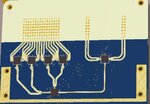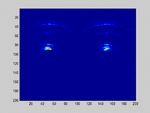Luca_Romano
Junior Member level 2
Dear all,
I have a doubts regarding the far field formula (R_far_field = 2D²/λ) in the case of virtual array configuration (as illustrated in the attached figure).
Which value I should consider as D? (82,136 mm?). The antenna front end is used in a FMCW radar in 77-79 GHz band.
Thanks a lot in advance,
Best regards,
L.R.

I have a doubts regarding the far field formula (R_far_field = 2D²/λ) in the case of virtual array configuration (as illustrated in the attached figure).
Which value I should consider as D? (82,136 mm?). The antenna front end is used in a FMCW radar in 77-79 GHz band.
Thanks a lot in advance,
Best regards,
L.R.



